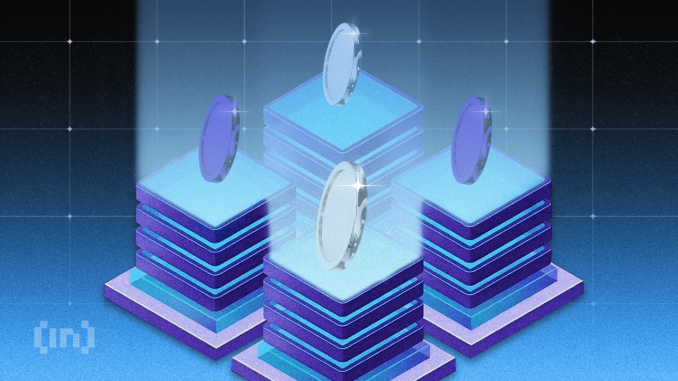
Blockchain technology is causing a seismic shift in how we think about asset ownership and investment. The ability to “tokenize” real-world assets (RWAs) such as real estate, art, commodities, and intellectual property has tremendous disruptive potential.
Tokenization, which represents these assets as digital tokens on a blockchain, unlocks a multitude of benefits, including increased liquidity for previously illiquid asset classes, enabling fractional ownership and democratizing investment, 24/7 trading across global markets, and enhanced transparency around ownership and transactions.
However, this novel capability to tokenize traditional asset classes and unlock their boundless potential requires stringent security, threat mitigation, and compliance measures. Deddy Lavid, CEO at AI Web3 security firm Cyvers, told BeInCrypto that failing to implement robust safeguards could expose investors to undue risks and liabilities and curb the impressive growth of this booming market.
Unique Risks Demanding New Solutions
While the RWA tokenization empowers this asset class, it also introduces new attack vectors that conventional security approaches struggle to address adequately. According to Lavid, smart contract vulnerabilities, sophisticated DeFi exploits, digital wallet vulnerabilities, scams, and others represent clear dangers that bad actors are actively looking to exploit:
Smart Contract Risks: The smart contracts that activate tokenized asset transactions can contain code flaws, which hackers can exploit to manipulate transactions or drain funds if they are not comprehensively audited.
DeFi Protocol Threats: Decentralized finance protocols that enable tokenized lending, borrowing, and trading face novel threats, including flash loan attacks that drain liquidity pools.
Digital Wallet Vulnerabilities: Asset ownership and transactions occur through digital wallets, which are vulnerable to evolving attack methods, such as phishing, malware, and theft of private keys.
Scams & Fraud Risks: Malicious actors may attempt to steal tokenized assets through phishing scams, address poisoning attacks where legitimate addresses are swapped with malicious ones, and other fraudulent schemes.
The inherent features of blockchain, such as pseudonymous transactions and immutability, have become a double-edged sword, hampering fraud investigations and illegal activities with tokenized assets.
Navigating the Compliance Labyrinth
Lavid added that businesses dealing in tokenized real-world assets must also navigate a complex web of regulatory compliance obligations.
Securities Regulations: Tokenized assets may trigger certain securities rules and reporting requirements related to the issuance, trading, anti-money laundering provisions, and more.
Tax & Reporting Duties: Blockchain’s global, pseudonymous nature creates particular hurdles for tax reporting, withholding, and documentation demands. Reporting crypto taxation can be a very convoluted task due to problems such as spam transactions.
KYC & AML: Tokenization platforms must implement robust identity verification and anti-money laundering screening of all counterparties. The existing intelligence and screening solutions often offer obsolete data on wallets and smart contracts due to the latency in the process of “framing” malicious addresses in their databases. This often causes companies to interact with malicious actors, even though they were “cleared” by the prominent screening services.
Avoiding regulatory traps and proactively guaranteeing compliance from the start is crucial for avoiding devastating penalties, reputational damage, or disruptions later on.
New Security Paradigm
According to Lavid, there must be a comprehensive shift towards real-time security monitoring and automated preventative measures to protect this dramatic transformation. Just as blockchain offers significant innovation in a variety of segments, from banking to derivatives trading, its security paradigm must change to meet these new needs head-on:
24/7 Proactive Monitoring: Continuous monitoring of network transactions and smart contract activity to detect anomalies, vulnerabilities, and active threats in real-time before damage occurs.
Instantaneous Mitigation: Automatically implementing protective measures immediately when a threat is found, stopping the flow of funds at risk, alerting the right people, and blocking active attack paths.
Attack Pattern Recognition: Advanced visual mapping technology to identify and categorize multi-phase, multi-signature attacks by their unique transactional patterns across the blockchain.
Robust security for tokenized platforms mandates implementing holistic solutions that fuse regulatory compliance with proactive criminal risk monitoring. Integrating advanced blockchain intelligence provides comprehensive visibility, from onboarding diligence to continuous transaction screening.
Read more: What Are Tokenized Real-World Assets (RWA)?
This unified approach surfaces not only regulatory risks but also proactively identifies addresses associated with hacks, scams, fraud, and money laundering based on transactional forensics. It enables mapping complex, multi-phase attack strategies from inception through laundering stages.
This empowers a deeper understanding of how to disrupt threats in ways that retrospective analysis cannot preemptively. Converging compliance duties with leading-edge risk analytics is vital to safeguarding tokenization’s evolutionary potential.
Rising to the Challenge
Realizing blockchain’s revolutionary vision necessitates security capabilities that are equally innovative and dynamic:
The crux lies: traditional reactive security models and fragmented compliance procedures are fundamentally ill-equipped to tackle tokenization’s uncharted complexities.
“Current security approaches based on post-mortem analysis simply cannot handle blockchain’s immutable and lightning-paced environment. Securing this transformative journey towards tokenized real-world assets demands an entirely new paradigm,” Lavid told BeInCrypto.
This new reality necessitates robust real-time security monitoring, preventative mitigation measures, and recognizing multi-vector attack patterns to disrupt coordinated strategies.
Read more: ERC3643: The Token Standard For Real-World Assets (RWAs)
Continuous 24/7 monitoring of all blockchain transactions, smart contract activity, and networked ecosystems is critical to detecting anomalies or active threats in real-time before damage occurs. According to Lavid, complementing this is the capacity to instantly halt malicious fund flows, alert relevant parties, and implement defensive countermeasures upon identifying risks.
“All stakeholders—investors, institutions, developers, regulators, and beyond—must collaborate to uplift security standards to meet this generational challenge head-on. Through industry-wide innovation elevating real-time security, we can both unleash and safeguard tokenization’s transformative potential,” Lavid added.
Securing the Frontier
To fully realize tokenization’s disruptive potential, defenses must be strengthened with cutting-edge preventative solutions that can proactively disrupt cyber attacks and mitigate regulatory and criminal risks, including fraud, scams, and money laundering. Next-generation systems must have multi-layered security and compliance controls adapted to tokenization’s specific complications to survive this evolutionary leap.
Read more: The Future of Finance: Tokenization of Real-World Assets
The blockchain ecosystem pioneers new finance. A pioneering confluence of proactive defensive paradigms—continuous monitoring, instantaneous mitigation, and preventative risk controls across cyber and compliance domains—is needed to protect this paradigm change.
Disclaimer
Following the Trust Project guidelines, this feature article presents opinions and perspectives from industry experts or individuals. BeInCrypto is dedicated to transparent reporting, but the views expressed in this article do not necessarily reflect those of BeInCrypto or its staff. Readers should verify information independently and consult with a professional before making decisions based on this content. Please note that our Terms and Conditions, Privacy Policy, and Disclaimers have been updated.





Be the first to comment